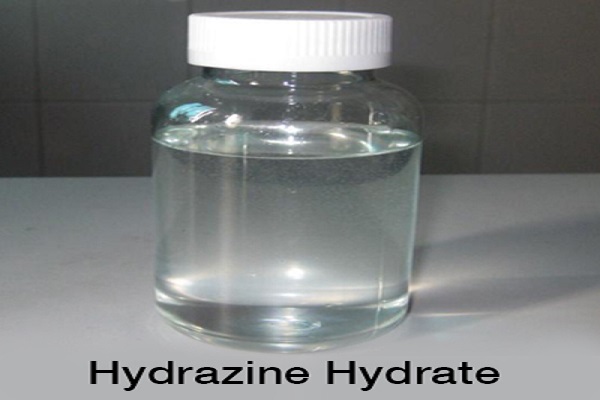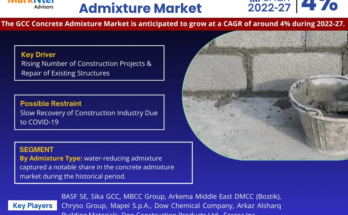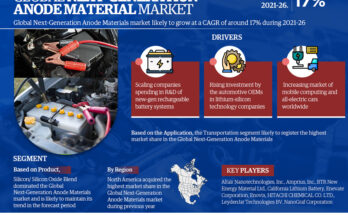Global Hydrazine Hydrate Market has valued at USD 430.15 million in 2022 and is anticipated to project robust growth in the forecast period with a CAGR of 4.69% through 2028. Hydrazine hydrate, a highly reactive and versatile chemical compound, finds applications in various industries such as pharmaceuticals, agrochemicals, water treatment, and polymerization. It serves as a crucial reducing agent, oxygen scavenger, and chemical intermediate in the production of several compounds.
With the agricultural industry experiencing remarkable growth and the need for effective crop protection on the rise, the demand for hydrazine hydrate continues to increase. Moreover, in water treatment, hydrazine hydrate plays a vital role as an oxygen scavenger and corrosion inhibitor, contributing to the preservation of water quality. The global concern for water quality and the pressing need for efficient water treatment solutions further propel the sales of hydrazine hydrate.
While North America and Europe stand as leaders in the market, benefiting from strong chemical industries and robust R&D investments, the growth of the hydrazine hydrate market is projected to accelerate in Asia-Pacific. This projection can be attributed to rapid industrialization, increasing agricultural activity, and the rising demand for pharmaceutical products in emerging economies. As these regions witness substantial expansion, the hydrazine hydrate market is expected to thrive, offering more opportunities for industry players.
Key Market Drivers
Growing Demand of Hydrazine Hydrate in Pharmaceutical Applications
Hydrazine hydrate, a crucial catalytic agent, plays a significant role in various drug synthesis processes. Its versatile applications are widely recognized in the production of pharmaceutical intermediates, including hydrazones, hydrazides, and azides. These intermediates, acting as key building blocks, contribute to the synthesis of numerous drugs, encompassing anti-cancer medications, anti-inflammatory agents, and antiviral drugs.
Download FREE Sample Report @ https://www.techsciresearch.com/sample-report.aspx?cid=2223
As a catalyst, hydrazine hydrate facilitates essential reactions in drug synthesis, such as reduction, condensation, and cyclization. By enabling chemists to achieve high yields, selectivity, and purity, it paves the way for the development of pharmaceutical compounds with superior quality. The demand for hydrazine hydrate in drug synthesis has witnessed substantial growth, driving the expansion of the global hydrazine hydrate market.
Moreover, hydrazine hydrate finds utility in chemical synthesis and derivatization processes to modify and enhance the properties of pharmaceutical compounds. It reacts with various functional groups, such as carbonyls and nitro groups, offering chemists a versatile tool to introduce desired functionalities or alter the physicochemical properties of drugs. By harnessing the potential of hydrazine hydrate, pharmaceutical manufacturers can perform reactions like hydrazone formation, reductive amination, and azo coupling. These reactions contribute to the development of new drug molecules with improved bioavailability, stability, and targeted therapeutic effects. The growing demand for chemical synthesis and derivatization methods utilizing hydrazine hydrate is propelling the global market forward with promising prospects.
Furthermore, the ability of hydrazine hydrate to scavenge oxygen makes it an indispensable component in the pharmaceutical packaging industry. Oxygen can degrade the quality and stability of drugs, particularly those sensitive to oxidation. The incorporation of hydrazine hydrate into packaging materials, such as films and sachets, effectively removes residual oxygen from drug containers.
By serving as an oxygen scavenger, hydrazine hydrate helps extend the shelf life of pharmaceutical products, ensuring their efficacy and safety throughout their intended lifespan. This application has gained significant traction in the industry, leading to an increased demand for hydrazine hydrate and driving the growth of the global market. The continuous advancements in pharmaceutical packaging techniques further enhance the utilization of hydrazine hydrate, solidifying its position as a vital component in the industry.
Growing Demand of Hydrazine Hydrate in Agriculture Applications
One of the primary factors driving the increasing demand for hydrazine hydrate in agriculture is its exceptional ability to enhance crop yield and improve the quality of agricultural produce. Hydrazine hydrate serves as an effective plant growth regulator, promoting not only healthy plant growth but also increasing photosynthesis efficiency and enhancing nutrient uptake by crops. By applying hydrazine hydrate, farmers can potentially achieve higher crop yields, improve resistance to environmental stresses, and effectively mitigate the detrimental effects of diseases and pests. This increased productivity and improved crop quality significantly contribute to the growing demand for hydrazine hydrate in the agriculture sector.
Furthermore, another remarkable application of hydrazine hydrate in agriculture lies in its role as a root growth enhancer. Hydrazine hydrate stimulates root development, leading to the establishment of stronger and healthier root systems for plants. Such robust root systems provide plants with increased access to essential nutrients and water from the soil, thereby resulting in improved overall plant health and vitality. By incorporating hydrazine hydrate into their agricultural practices, farmers can effectively promote better root growth, which in turn greatly enhances plant growth and resilience. This specific application has gained significant traction in the industry, further contributing to the increasing demand for hydrazine hydrate.
Moreover, hydrazine hydrate has been found to play a crucial role in stress mitigation and disease control in agricultural crops. It aids plants in coping with various stress factors such as drought, salinity, and extreme temperatures. Additionally, hydrazine hydrate exhibits remarkable antimicrobial properties, making it highly effective in controlling plant diseases caused by bacteria and fungi. The ability of hydrazine hydrate to effectively mitigate stress and combat plant diseases is of great interest to farmers who seek to protect their crops and maximize their yields. The continuously growing demand for stress management and disease control solutions in agriculture has significantly contributed to the remarkable growth of the hydrazine hydrate market.
As the agricultural industry continues to evolve and face new challenges, hydrazine hydrate emerges as a valuable and versatile tool that supports sustainable agricultural practices and ensures optimal crop production.
Key Market Challenges
Harmful Properties of Hydrazine Hydrate
One of the primary challenges associated with hydrazine hydrate is its high toxicity. Exposure to hydrazine hydrate can cause severe health issues, including skin and eye irritation, respiratory problems, and potential damage to the liver, kidneys, and central nervous system. Prolonged or repeated exposure to hydrazine hydrate may even lead to carcinogenic effects.
Due to these health risks, strict regulatory measures are in place to ensure the safe handling, storage, and transportation of hydrazine hydrate. Compliance with safety guidelines and proper protective equipment are essential when working with this chemical compound. The potential health hazards associated with hydrazine hydrate pose a challenge for its global market growth.
Apart from its negative impact on human health, hydrazine hydrate also poses environmental challenges. Improper disposal or accidental release of hydrazine hydrate into soil, water bodies, or the atmosphere can have detrimental effects on ecosystems. It can contaminate water sources, harm aquatic life, and contribute to air pollution. The environmental concerns associated with hydrazine hydrate have led to increased scrutiny and regulations surrounding its use. Industries and manufacturers are required to adhere to stringent environmental standards to minimize the potential adverse effects on the environment. This heightened focus on sustainability and environmental protection creates a challenge for the global hydrazine hydrate market.
Moreover, the volatility and flammability of hydrazine hydrate add another layer of complexity to its handling and storage. Special precautions and safety measures must be implemented to prevent accidents and ensure the safety of workers and facilities. These additional considerations further contribute to the challenges faced by industries using hydrazine hydrate. In summary, the high toxicity, potential health hazards, environmental impact, and safety considerations make hydrazine hydrate a chemical compound with multiple challenges. Strict regulations and adherence to safety protocols are crucial for mitigating these challenges and ensuring the responsible use of hydrazine hydrate in various industries.
Key Market Trends
Growing demand for polymerization and blowing agents
Polymerization agents play a crucial role in facilitating the formation of polymers by effectively linking monomers together, resulting in the creation of long-chain molecules. These agents act as catalysts, enabling the chemical reaction that transforms individual monomers into a unified polymer structure. Blowing agents, on the other hand, have a distinct purpose in the polymer industry. They are utilized to introduce a cellular structure within polymers, leading to the development of lightweight materials with exceptional insulation properties. The demand for polymer foams has been on the rise across various industries, including automotive, construction, and packaging.
This surge in demand can be attributed to several factors, with one of the primary drivers being the increasing preference for lightweight materials. Lightweight polymers offer numerous advantages, such as improved fuel efficiency in automobiles, reduced energy consumption in buildings, and enhanced handling and logistics in packaging applications. As a result, industries are increasingly adopting polymer foams as a viable alternative to heavier materials, thereby fueling the demand for both polymerization and blowing agents. Within the packaging industry, the demand for polymer foams has witnessed significant growth. Lightweight packaging materials not only contribute to cost savings in shipping but also provide enhanced product protection during transportation.
Moreover, the automotive sector has embraced the use of polymer foams for interior components, including dashboards and seat cushions, to achieve weight reduction and enhance overall comfort. In summary, the importance of polymerization and blowing agents in the production of polymer foams cannot be overstated. The increasing demand for lightweight materials, coupled with the numerous benefits they offer, has propelled the adoption of polymer foams across various industries, making polymerization and blowing agents indispensable in the quest for innovative and efficient material solutions.
Segmental Insights
Application Insights
The Polymerization and Blowing Agents segment is projected to experience rapid growth during the forecast period. Hydrazine hydrate, a key component in polymerization reactions, serves as a vital chain transfer agent. Its role in controlling the molecular weight and structure of polymers enables the development of desired properties, including enhanced strength, flexibility, and thermal stability. This has led to a surge in demand for hydrazine hydrate across industries such as packaging, automotive, and construction, where polymers play a crucial role.
Moreover, hydrazine hydrate finds extensive application as a chemical blowing agent, particularly in the production of foams and cellular materials. Its decomposition releases nitrogen gas, creating bubbles and expanding the material. This process is widely employed in the manufacturing of expanded polystyrene (EPS), polyurethane foams, and various other foam-based products.
The increasing demand for foams in insulation, packaging, and construction applications has further fueled the utilization of hydrazine hydrate as a blowing agent. Its compatibility with different polymerization processes and versatility in polymers such as polyethylene, polypropylene, polystyrene, and polyurethane make it an attractive choice for manufacturers. Additionally, hydrazine hydrate offers several technical advantages in polymerization and blowing agent applications. It not only enhances processing efficiency and reduces cycle time but also improves the physical properties of resulting materials, such as foam density and cell structure.
Overall, the multifaceted nature of hydrazine hydrate makes it an indispensable component in the polymer industry, contributing to the production of high-quality materials with enhanced performance characteristics.
Related Reports
Acrylic Emulsions Market [2028] – Forecast & Projected Growth
Alpha Olefins Market [2028] – Share, Trends & Forecast
Table of Content-Hydrazine Hydrate Market
- Product Overview
1.1. Market Definition
1.2. Scope of the Market
1.2.1. Markets Covered
1.2.2. Years Considered for Study
1.2.3. Key Market Segmentations
- Research Methodology
2.1. Objective of the Study
2.2. Baseline Methodology
2.3. Key Industry Partners
2.4. Major Association and Secondary Applications
2.5. Forecasting Methodology
2.6. Data Triangulation & Validation
2.7. Assumptions and Limitations
- Executive Summary
3.1. Overview of the Market
3.2. Overview of Key Market Segmentations
3.3. Overview of Key Market Players
3.4. Overview of Key Regions/Countries
3.5. Overview of Market Drivers, Challenges, Trends
- Impact of COVID-19 on Global Hydrazine Hydrate Market
- Voice of Customer
- Global Hydrazine Hydrate Market Outlook
6.1. Market Size & Forecast
6.1.1. By Value & Volume
6.2. Market Share & Forecast
6.2.1. By Application (Pharmaceuticals, Polymerization and Blowing Agents, Agrochemicals, Water Treatment, Others)
6.2.2. By Region
6.2.3. By Company (2022)
6.3. Market Map
- Asia Pacific Hydrazine Hydrate Market Outlook
7.1. Market Size & Forecast
7.1.1. By Value & Volume
7.2. Market Share & Forecast
7.2.1. By Application
7.2.2. By Country
7.3. Asia Pacific: Country Analysis
7.3.1. China Hydrazine Hydrate Market Outlook
7.3.1.1. Market Size & Forecast
7.3.1.1.1. By Value & Volume
7.3.1.2. Market Share & Forecast
7.3.1.2.1. By Application
7.3.2. India Hydrazine Hydrate Market Outlook
7.3.2.1. Market Size & Forecast
7.3.2.1.1. By Value & Volume
7.3.2.2. Market Share & Forecast
7.3.2.2.1. By Application
7.3.3. Australia Hydrazine Hydrate Market Outlook
7.3.3.1. Market Size & Forecast
7.3.3.1.1. By Value & Volume
7.3.3.2. Market Share & Forecast
7.3.3.2.1. By Application
7.3.4. Japan Hydrazine Hydrate Market Outlook
7.3.4.1. Market Size & Forecast
7.3.4.1.1. By Value & Volume
7.3.4.2. Market Share & Forecast
7.3.4.2.1. By Application
7.3.5. South Korea Hydrazine Hydrate Market Outlook
7.3.5.1. Market Size & Forecast
7.3.5.1.1. By Value & Volume
7.3.5.2. Market Share & Forecast
7.3.5.2.1. By Application
- Europe Hydrazine Hydrate Market Outlook
8.1. Market Size & Forecast
8.1.1. By Value & Volume
8.2. Market Share & Forecast
8.2.1. By Application
8.2.2. By Country
8.3. Europe: Country Analysis
8.3.1. France Hydrazine Hydrate Market Outlook
8.3.1.1. Market Size & Forecast
8.3.1.1.1. By Value & Volume
8.3.1.2. Market Share & Forecast
8.3.1.2.1. By Application
8.3.2. Germany Hydrazine Hydrate Market Outlook
8.3.2.1. Market Size & Forecast
8.3.2.1.1. By Value & Volume
8.3.2.2. Market Share & Forecast
8.3.2.2.1. By Application
8.3.3. Spain Hydrazine Hydrate Market Outlook
8.3.3.1. Market Size & Forecast
8.3.3.1.1. By Value & Volume
8.3.3.2. Market Share & Forecast
8.3.3.2.1. By Application
8.3.4. Italy Hydrazine Hydrate Market Outlook
8.3.4.1. Market Size & Forecast
8.3.4.1.1. By Value & Volume
8.3.4.2. Market Share & Forecast
8.3.4.2.1. By Application
8.3.5. United Kingdom Hydrazine Hydrate Market Outlook
8.3.5.1. Market Size & Forecast
8.3.5.1.1. By Value & Volume
8.3.5.2. Market Share & Forecast
8.3.5.2.1. By Application
- North America Hydrazine Hydrate Market Outlook
9.1. Market Size & Forecast
9.1.1. By Value & Volume
9.2. Market Share & Forecast
9.2.1. By Application
9.2.2. By Country
9.3. North America: Country Analysis
9.3.1. United States Hydrazine Hydrate Market Outlook
9.3.1.1. Market Size & Forecast
9.3.1.1.1. By Value & Volume
9.3.1.2. Market Share & Forecast
9.3.1.2.1. By Application
9.3.2. Mexico Hydrazine Hydrate Market Outlook
9.3.2.1. Market Size & Forecast
9.3.2.1.1. By Value & Volume
9.3.2.2. Market Share & Forecast
9.3.2.2.1. By Application
9.3.3. Canada Hydrazine Hydrate Market Outlook
9.3.3.1. Market Size & Forecast
9.3.3.1.1. By Value & Volume
9.3.3.2. Market Share & Forecast
9.3.3.2.1. By Application



